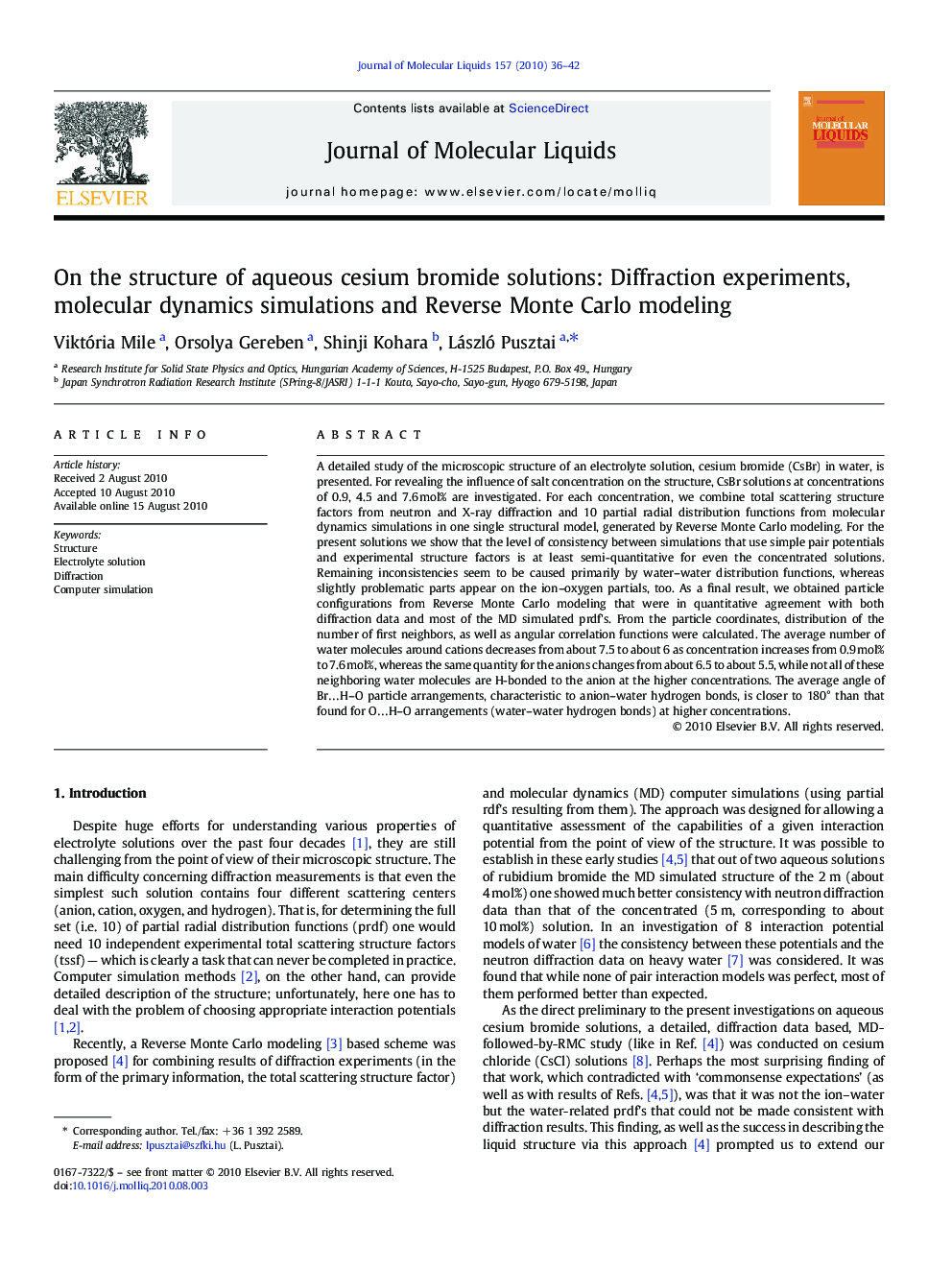| Article ID | Journal | Published Year | Pages | File Type |
|---|---|---|---|---|
| 5412850 | Journal of Molecular Liquids | 2010 | 7 Pages |
Abstract
A detailed study of the microscopic structure of an electrolyte solution, cesium bromide (CsBr) in water, is presented. For revealing the influence of salt concentration on the structure, CsBr solutions at concentrations of 0.9, 4.5 and 7.6 mol% are investigated. For each concentration, we combine total scattering structure factors from neutron and X-ray diffraction and 10 partial radial distribution functions from molecular dynamics simulations in one single structural model, generated by Reverse Monte Carlo modeling. For the present solutions we show that the level of consistency between simulations that use simple pair potentials and experimental structure factors is at least semi-quantitative for even the concentrated solutions. Remaining inconsistencies seem to be caused primarily by water-water distribution functions, whereas slightly problematic parts appear on the ion-oxygen partials, too. As a final result, we obtained particle configurations from Reverse Monte Carlo modeling that were in quantitative agreement with both diffraction data and most of the MD simulated prdf's. From the particle coordinates, distribution of the number of first neighbors, as well as angular correlation functions were calculated. The average number of water molecules around cations decreases from about 7.5 to about 6 as concentration increases from 0.9 mol% to 7.6 mol%, whereas the same quantity for the anions changes from about 6.5 to about 5.5, while not all of these neighboring water molecules are H-bonded to the anion at the higher concentrations. The average angle of Brâ¦H-O particle arrangements, characteristic to anion-water hydrogen bonds, is closer to 180° than that found for Oâ¦H-O arrangements (water-water hydrogen bonds) at higher concentrations.
Related Topics
Physical Sciences and Engineering
Chemistry
Physical and Theoretical Chemistry
Authors
Viktória Mile, Orsolya Gereben, Shinji Kohara, László Pusztai,
